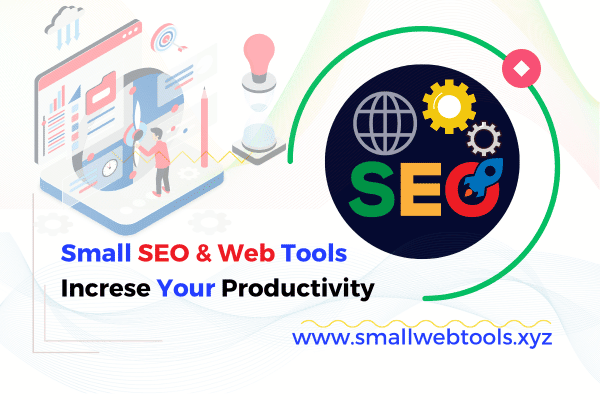Unleash Your Site's Potential: The Ultimate Website Crawler Tool Guide
In the ever-evolving digital landscape, maintaining a healthy and optimized website is crucial for attracting visitors, improving search engine rankings, and achieving your online goals. A powerful tool that can help you achieve this is a Website Crawler. This comprehensive guide will delve into what a website crawler is, why it's essential for SEO, and how to effectively use a crawler tool to analyze and enhance your website's performance.
What is a Website Crawler?
A website crawler, also known as a spider or bot, is an automated program that systematically browses the web, collecting information about the pages it visits. Search engines like Google use crawlers to discover new and updated content, index web pages, and understand the structure of the internet. Beyond search engines, website crawlers are invaluable tools for website owners and SEO professionals.
Here's a simple analogy: Imagine a librarian meticulously going through every book in a library, noting down the title, author, and location. A website crawler does a similar job, but for web pages.
Why is a Website Crawler Important for SEO and Website Health?
Website crawlers provide critical insights that can significantly impact your website's SEO and overall health. Here's why they are so important:
- Discovering Issues: Crawlers can identify a wide range of technical issues that may be hindering your website's performance, such as broken links (404 errors), missing or duplicate meta tags, incorrect redirects, and slow loading pages.
- Improving Indexability: By understanding how search engine crawlers see your website, you can optimize its structure and content to ensure that all important pages are easily accessible and indexed.
- Analyzing Website Structure: Crawlers provide a map of your website's architecture, helping you identify areas where the navigation or internal linking can be improved.
- Content Optimization: Crawlers can help you analyze your content for issues like thin content, keyword stuffing, and duplicate content, allowing you to improve its quality and relevance.
- Monitoring Changes: Regular crawls can help you track changes to your website over time, allowing you to quickly identify and address any new issues that may arise.
- Competitive Analysis: Some crawlers allow you to analyze your competitors' websites, providing insights into their SEO strategies and identifying potential opportunities.
Introducing Our Feature-Rich Website Crawler Tool
To help you effectively analyze and optimize your website, we offer a powerful and user-friendly Website Crawler Tool. Our tool is designed to provide you with comprehensive insights into your website's health, SEO performance, and technical structure.
Key Features of Our Website Crawler Tool:
- Comprehensive Crawling: Our tool can crawl websites of any size, identifying all accessible pages, including HTML, CSS, JavaScript, and image files.
- Error Detection: Automatically detect a wide range of errors, including broken links (404s), server errors (500s), redirect errors, and other technical issues.
- SEO Auditing: Analyze key SEO factors, such as meta tags, headings, page titles, URL structure, and more.
- Content Analysis: Identify duplicate content, thin content, and other content-related issues.
- Link Analysis: Analyze both internal and external links, identifying broken links, redirect chains, and opportunities for link building.
- Page Speed Analysis: Measure page loading speed and identify performance bottlenecks.
- Robots.txt and Sitemap Analysis: Ensure that search engine crawlers can properly access and index your website.
- Customizable Crawl Settings: Configure crawl settings, such as crawl depth, user agent, and excluded URLs.
- Detailed Reports: Generate comprehensive reports that provide actionable insights and recommendations.
- Export Options: Export data in various formats (e.g., CSV, Excel) for further analysis.
How to Use Our Website Crawler Tool Effectively:
- Enter Your Website URL: Simply enter the URL of the website you want to crawl into the designated field.
- Configure Crawl Settings (Optional): Customize the crawl settings according to your needs, such as crawl depth, user agent, and any URLs you want to exclude.
- Start the Crawl: Initiate the crawling process. Our tool will systematically analyze your website.
- Review the Results: Once the crawl is complete, review the detailed report generated by the tool.
- Prioritize Issues: Focus on addressing the most critical issues first, such as broken links, server errors, and major SEO problems.
- Implement Recommendations: Follow the recommendations provided by the tool to fix errors, optimize your website, and improve its performance.
- Regularly Re-crawl: Schedule regular crawls to monitor your website's health and identify any new issues that may arise.
Best Practices for Website Crawling:
- Respect Robots.txt: Always adhere to the instructions in the website's robots.txt file, which specifies which parts of the site should not be crawled.
- Crawl During Off-Peak Hours: To minimize the impact on website performance, consider scheduling crawls during periods of low traffic.
- Start with a Small Sample: If you are crawling a large website, start with a small sample of URLs to get an initial overview before performing a full crawl.
- Use a User-Agent That Identifies Your Crawler: This allows website administrators to identify your crawler and, if necessary, adjust their server settings.
- Monitor Server Load: Be mindful of the server load your crawler is generating and adjust the crawl speed if necessary to avoid overloading the server.
- Analyze Data Regularly: Don't just run a crawl and forget about it. Regularly analyze the data and implement the recommended changes.
Take Control of Your Website's Health Today!
A website crawler is an indispensable tool for any website owner or SEO professional who wants to ensure their website is healthy, optimized, and performing at its best. Our Website Crawler Tool provides you with the insights you need to identify and address issues, improve your SEO, and achieve your online goals. Start using our tool today and unlock the full potential of your website.
Ready to get started? Try our free Website Crawler Tool now!

.jpg)

Don't spam here please.